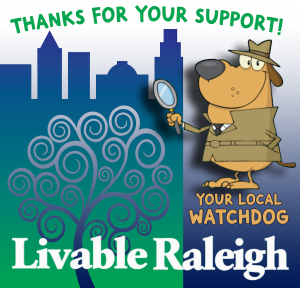
Mr. Christian Anastasiadis is Chief Operating Officer at McConnell Golf, LLC for 21 years, and in the private club business since 1991. Graduated with a Hospitality Degree from the Austrian Hotelfachschule Bad Gleichenberg. Living in Raleigh since 2003.
Mr. Anastasiadis submitted this for publication as a guest blog:
Let’s talk about what happens when good intentions turn into bad policy—and when the very citizens a city is supposed to serve are left in the dark.
This week, Raleigh Country Club and our ownership entity filed a lawsuit against the City of Raleigh and a developer who has proposed a 16-unit townhome project directly adjacent to our historic golf course. The problem isn’t development per se. It’s the way the City pushed through a radical zoning change without transparency, without proper notice, and without regard for the community it impacts.
Let me walk you through how we got here—and why we said, “enough.”
The “Frequent Transit” Myth
In 2022, the Raleigh City Council passed what they called a “Frequent Transit Development Ordinance,” part of their larger “Missing Middle” initiative. The idea? Allow denser housing near “frequent transit” routes—more walkable, affordable living options, less car dependency, more vibrant neighborhoods.
Sounds nice on paper. But only on paper.
But here’s the kicker: Raleigh doesn’t actually have frequent transit.
What we have is a theoretical map and a BRT line—New Bern Avenue—that was supposed to be done by 2025 and is now delayed until 2030. It’s like building a skyscraper based on the promise that one day, maybe, there might be an elevator. The current transit system is similar to an aviation hub system, meaning that you have to go to downtown to catch another bus. Meaning that if you live on Six Forks and you want to go to Wake Med, it will take you over an hour using the transit system.
And so we’re using nonexistent transit as the justification to push high-density developments into single-family neighborhoods, including the King Charles area, which has had protective zoning in place for nearly 20 years. City Council just approved a development on Clarendon Cresent Rd, next to Enloe. 36 townhomes on 1.4 acres, by abandoning the King Charles NCOD with no meaningful infrastructure in place. Imagine the traffic jam. Homes will go for 400k. So much for affordability. The high-density Frequent Transit Development Ordinance created nothing but a cheap land grab by some developers. Developing affordable housing was not on their mind.
A Text Change in Name Only
The City didn’t rezone these areas the proper way. Instead, they used a procedural sleight-of- hand, labeling it a “text change” to the Unified Development Ordinance. This way, they bypassed the normal legal requirements—like directly notifying affected residents via mail and holding a proper legislative hearing.
You probably didn’t hear about this change. That’s not a coincidence. Only five people spoke at the public hearing. In a city of nearly half a million residents, that’s not engagement. That’s evasion.
No More CACs. No More Input.
This is part of a larger pattern in Raleigh. In 2020, the City Council, per the order of Mayor Mary Ann Baldwin, eliminated the Citizen Advisory Councils—local forums that used to give communities a voice on planning and zoning decisions. Since then, residents have been left out of the room where it happens.
The Missing Middle may sound progressive, but it has become a vehicle for high-density development with minimal affordability, maximum disruption, and no meaningful accountability. A wolf in sheep skin.
Our neighbors didn’t ask for this. And Raleigh Country Club—founded in 1948, a community partner and green space steward—certainly didn’t ask for 16 units crammed next to a tournament fairway without a single word of consultation.
One Affordable Unit, and 15 Headaches
The development proposed next to us offers 16 townhomes. Just one is designated as “affordable.” That’s 6.25%—but under Raleigh’s current ordinance, that checks the box. Meanwhile, the rest of the project will burden an already-strained infrastructure, increase traffic, and reduce the character of a historically cohesive neighborhood.
This isn’t smart growth. This is sloppy sprawl. This is a land grab! Shame on all of you.
So What Now?
We’ve asked the courts to review the legality of the City’s actions. This includes whether the ordinance is even valid, given the procedural shortcuts taken. We’re also asking for injunctive relief—to hit pause before irreversible harm is done.
This fight isn’t just about Raleigh Country Club. It’s about every neighborhood in Raleigh that could be blindsided next. It’s about the integrity of our planning system.
And it’s about restoring the voice of residents in decisions that affect their homes, their streets, and their lives.
We believe in Raleigh.
But we also believe that transparency, process, and respect for community must come before policy experiments dressed up in jargon.
Because when you remove the neighborhood voices, and when you start planning around fictional transit lines, you end up with a city that’s not built for people—but for headlines.
Let’s build better. And let’s do it together—with honesty, with engagement, and with real connectivity, not just on buses, but between the city and its citizens.
If you appreciate the kind of reporting we bring to you
|
Please donate $10 or $20, Thanks for supporting |
 |

